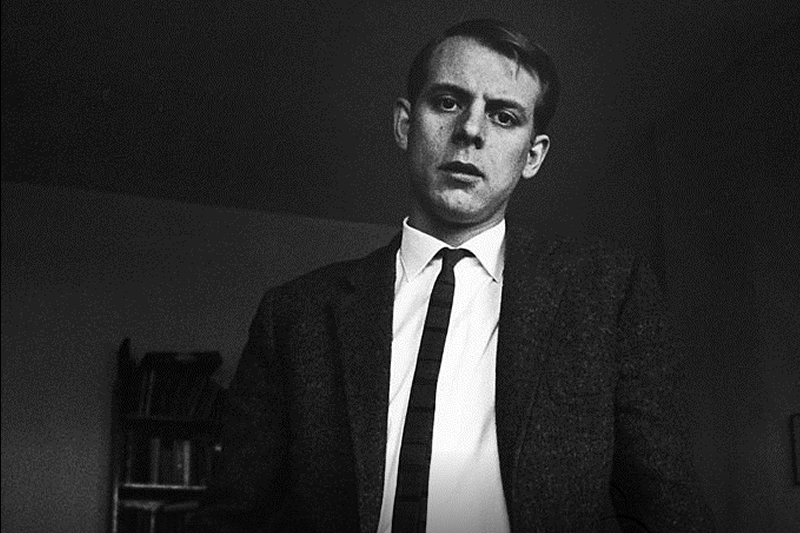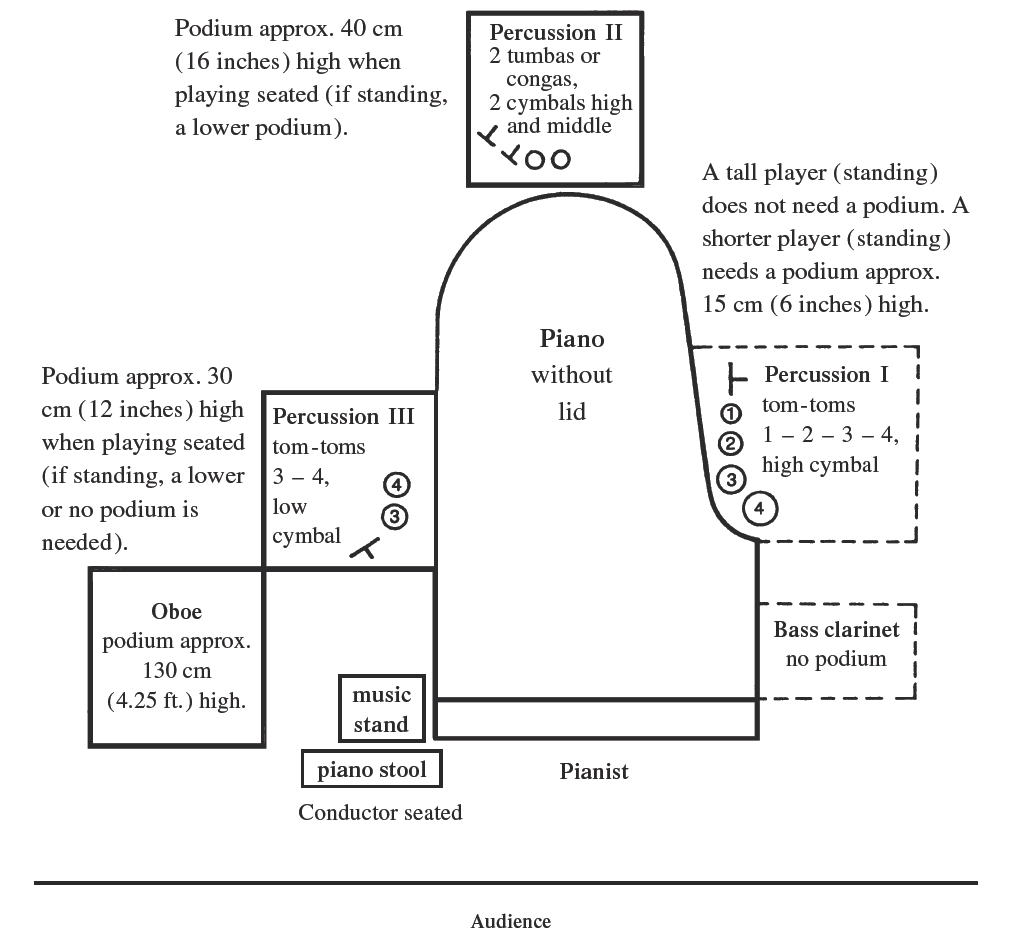
KREUZSPIEL supplement 2010
Stockhausen Complete Edition on CD
Since 1991, a complete edition of all recordings in which Karlheinz Stockhausen has personally participated is being released on compact discs. Each CD in this series is identified by Stockhausen's signature followed by an encircled number. The numbers indicate the general historical order of the works.
Stockhausen realised the electronic music and participated in these recordings as conductor, performer, sound projectionist, and musical director. He personally mixed down the recordings, mastered them for CDs, wrote the texts and drew the covers.
- The compact discs may be obtained from the Stockhausen-Verlag: Kettenberg 15, 51515 Kuerten, Germany (www.stockhausenCDs.com).
Karlheinz Stockhausen
KREUZSPIEL / CROSS-PLAY (1951)
for oboe, bass clarinet, piano, 3 percussionists, conductor
INSTRUMENTS
| Oboe (with microphone) |
| Bass clarinet (with microphone) |
| Piano and wood block (with at least 2 microphones) |
| 6 tom-toms (preferably with wooden rims) |
high 1 e.g.  |
| 2 |
| 3 (two, having the same pitch) |
| low 4 (two, having the same pitch) |
2 tumbas oder congas or bougarabous e.g.  |
| 4 cymbals |
| high (two) |
middle e.g.  |
| low |
The upper edges of the 6 tom-toms should be tangent to the upper edge of
the piano.
The indications for the right pedal should call forth a resonance in the
piano with the tom-tom beats.
The cymbal players should constantly vary the place they strike the cymbals
between the edge and the centre of the cymbal.
The oboe and bass clarinet are amplified, with one microphone each. A
microphone on a low stand is placed half left beneath the piano to amplify the
lower register, and a contact microphone (and possibly in addition a second,
normal microphone) beneath the piano to the right to amplify the higher register
– particularly the top octave.
It is also possible to attach a contact microphone under the keyboard for each octave. These microphones should not pick up the drums. It is recommended to acoustically screen the sound of the tom-toms by placing pieces of thick dense foam rubber below the piano facing the tom-toms.
The amplification of piano and percussion is also supported by 2 microphones (on stands ca. 2.5 m high) pointed towards the tumbas:
A sound projectionist in the middle of the hall regulates the balance of the players. For the sound projection, 2 x 2 loudspeakers are needed. They are placed beside the instruments at the left and right, at least 4.5 metres high if the floor of the auditorium is flat, or higher if the floor rises to the back (amphitheatre) or there are balconies. A 5th loudspeaker may be hung in the middle high above the instruments. The loudspeakers should not be tipped downwards. The sound should come from where the instruments are seated – as assessed from all seats in the hall. The treble of the piano is located at the right in the panorama (as heard from the hall), the bass at the left resulting in a cross from the oboe (high instrument at the left) to the piano treble at the right, and from the bass clarinet (low instrument at the right) to the piano bass at the left. The oboe and bass clarinet are set in the panorama where they are seated (oboe at the half-left, bass clarinet at the half-right). Piano, oboe and bass clarinet also sound softly over the middle loudspeaker.
The amplification should be adjusted so that all the instruments can be heard
equally well (even in pianissimo passages, when the drums are playing and
and  ) and so that the highest and lowest notes on the piano sound equally
loud.
) and so that the highest and lowest notes on the piano sound equally
loud.
To set the levels, it is recommended that the musicians repeatedly play the first movement starting at bar 28 while the conductor checks the setting of the loudspeakers from the hall.
Further Remarks
Since 1992, Stockhausen used so-called bourgarabou drums instead of tumbas or congas. These instruments sound better and are easier to play than tumbas, which require a special playing technique in order to produce a balanced sound.
It is important that the height of the tom-toms is correct in relation to the percussionists' hands; it may be necessary for the percussionists' podia to be different in height, so that the rims of the tom-toms are at the same level as the upper edge of the piano case while, at the same time, being at the right height for the rim-shots to be played.
The sound of the rim-shots should be an equal mixture of skin (head) and wood (rim); therefore, it may be necessary to play the head louder so that it can be clearly distinguished from the rim noise.
The conductor should conduct relatively high, but unobtrusively, yet giving clear entries for the synchronous beats.
The pianist should play calmly with little bodily movement. The highest octave should be played one degree louder than notated.
The woodwinds should never make a diminuendo before a rest, but rather should hold out the notes evenly.
Before the audience enters the auditorium, the piece should be played through once completely. To ensure a smooth course of the concert, it is important that the set-up of the instruments takes place before the concert begins and not during the concert between the pieces. It is best to programme a solo or tape piece before KREUZSPIEL.
Set-up for KREUZSPIEL
